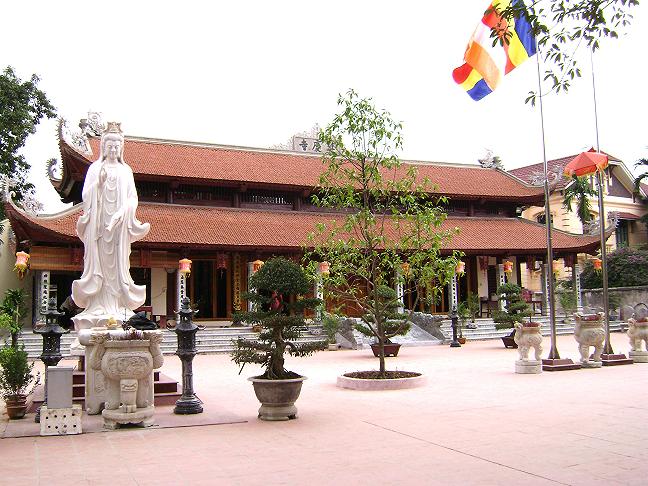Ba La Khe Temple of Beer is located in the old La Khe Village, now La Khe ward, Ha Dong district, is an ancient Vietnamese village, the land of ancient weaving and popular science, is one of the “four famous places of Mo -“. La – Canh – Cot” still retains many unique traditional cultural relics
Communal House – Pagoda – Stele Ba La Khe was built in the early 17th century. Including Dinh and 2 pagodas Dien Khanh, Phuc Khe, and inside a relic complex that has been recognized as a historical and cultural relic of traditional rural areas in the past. 1989.
INTRODUCTION ABOUT BA LA KHE BEER STORE HANOI
Ba La Khe communal house was built in the middle of a residential area, surrounded by a wall system, in front is a large pond to create a cool atmosphere, also a location for gathering water. The communal house has a large ground, so there are many works such as the communal house gate, the front house, the middle palace, and the harem.
According to legend, La Khe communal house worships two Angels: General Hoc Dien and Princess Tien Thien Bao Hoa.
La Khe communal house dates from the early 17th century, in the 18th century it was greatly renovated, but over a long period of time, there were many modifications. The communal house has a decorative form that is easy to play, favoring smooth planks close to square matches, without many patterns. The walls and columns of the porch are built of Bat Trang bricks with large veins, with a gable gable. That is the main architecture using lime mortar, common in the Nguyen Dynasty.
Currently, La Khe communal house keeps a lot of precious relics, in which there are expensive relics that are created elaborately and delicately such as judgments, incense, kieu, diaphragm, couplets, long throne cards. . In the communal house (Central Palace) there are two dragon thrones, tablets of Monsignor and Notre Dame. There is also a stele worshiping 10 Patriarchs of the weaving profession. The communal house was ordained by the dynasties from the Le to the Nguyen dynasties. The Nguyen Dynasty has bestowed 10 ancestor of the profession as ” Duc Bao respecting god “.
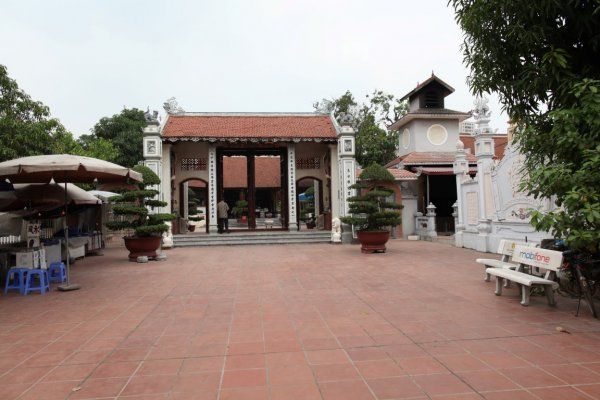
La Khe communal house was ranked as an architectural and art relic by the Ministry of Culture and Information (now the Ministry of Culture, Sports and Tourism) in 1998.
Ba La Khe Pagoda: The pagoda is named Dien Khanh Tu, located in La Khe ward, Ha Dong district. The pagoda was built in the Ly dynasty. It is a famous temple in the region with a beauty that few other temples have. The pagoda was established on a high ground, spacious, bright, solid structure, the main face facing south but a few degrees to the west, the main works include Tam Quan, Tien Duong, Upper Palace.
In the pagoda, there are still many rare and precious heritages of the nation, such as: cluster of epitaphs from the Le dynasty, bronze bells cast from the 2nd Canh Thinh dynasty, on the bell face is engraved the famous inscription of Dr. Ngo Trong Khue (also known as Ngo Trong Khue). Duy Vien), there are many rare and precious Buddha statues scattered from the Tran dynasties, the Le So dynasties to the early 20th century such as the stone statue of the Buddhist monk Bon Su, which is a statue of high artistic value. Ly, inheriting the art of Gandara, is ranked second after the statue in Hebei and many wooden statues dating from the Mac period stretching to the early 20th century.
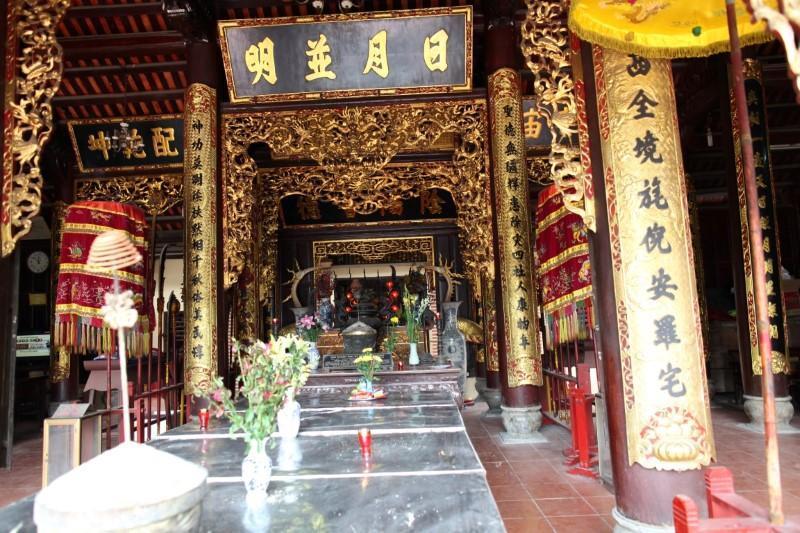
Ba La Khe stele: is also popular with folk beliefs. Notre Dame stele – the address to worship Ms. Tran Thi Hien, daughter of the old imperial soldier, brave Duke Tran Chan. She is the second concubine, wife of King Mac Dang Doanh. She was both beautiful, gentle, and dignified. When she was alive, she often helped the poor, taught people how to do business, expanded the weaving profession… Before she died, she handed over all of her fields, gardens, and properties to the people.
Year of the Dog (1538) She rested forever in the Vang field – The location of her hometown. Legend has it that she is very sacred, or epiphany continues to support people, so from generation to generation, after more than 550 years, her place of worship is revered by people around the region, with solemn rituals.
Remembering the merits of Our Lady, the people built a temple to worship her at the village gate. In 1982, La Khe villagers brought the stele to La Khe relic to worship
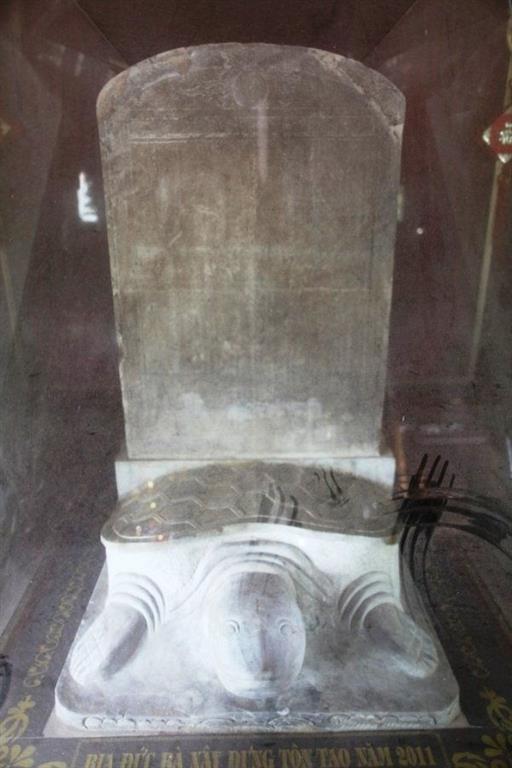
HISTORY OF FOUNDATION OF BA LA KHE BEER STORE HANOI
The communal house of La Khe village was established in the early 17th century and was restored in the 18th century. In the forbidden palace, there is a worship of the Second Thanh Hoang: Hac Dien Dai Vuong Thien Tien Bao Hoa Princess. Legend has it that these two gods helped people to exorcise evil and dug a canal connecting the Nhue River with the Day River in Van Phuc village so that this land would become rich. That stream was later named Phuc Khe (Phuc Stream), the temple built on the other side was also named Phuc Khe Tu, the people used to call it Ngoi Pagoda.
At the communal house, there is an altar to worship Ba stele and Thanh Su stele, two precious cultural and historical relics. The content of the stele Saint Master records the merits of 10 Chinese people with the surnames Ly, Trang and Tran, who came to teach La Khe villagers how to weave silk in the Ming Dynasty. In the 19th century, the Nguyen dynasty further ordained these ancestors as “Duc Bao Ton Than”.
The content of Ba stele records the story of a royal concubine of King Mac Thai Tong (1530-1540). Her real name is Tran Thi Hien, born in the spring of 1511 in La Ninh village, from a family with many generations of people working in the early Le dynasty. Her father is Do athlete Thiet Son Ba Tran Chan. In 1527, during the reign of King Mac Thai To, she was only 16 years old when she was chosen to be the concubine for Crown Prince Mac Dang Doanh. In 1530, the crown prince succeeded to the throne, she entered the Second Palace.
In 1532 she gave birth to a prince (the 5th in the dynasty). After that, she suffered from postpartum illness. In 1538, she had to go back to her hometown to take care of a motel. Although there were doctors who took care of her, she still couldn’t recover and died that winter at the age of 28. The king was deeply saddened and gave a solemn burial. in the Da Bang field. In 1539, the official Ta Thi Lang Bo Le Nguyen Tien Thanh & Rector of the Academy Bui Hoang co-composed the epitaph for her tomb.
Beer Ba spent nearly four centuries standing in the field, until the spring of 1913, it fell due to subsidence. An unknown person put on the epitaph and put it in the village’s genealogy book. Not long after, the beer was erected as before. In the 1980s, the beer poured again, and the villagers brought it back to the communal yard. According to the people’s wishes, the La Khe Village Relic Management Board has built a temple to the right of the temple to the right of the communal house, placing the stele inside.
ARCHITECTURE OF BA LA KHE BEER STORE HANOI
Over the centuries full of wars & community upheaval, La Khe communal house is no longer intact. The design of the old design was quite easy to play, favoring the smooth plank close to the square, without many patterns. The walls and columns of the porch are built with Bat Trang bricks with large veins, with a gable gable. This is the type of architecture mainly using bricks and mortar, common in the Nguyen Dynasty.
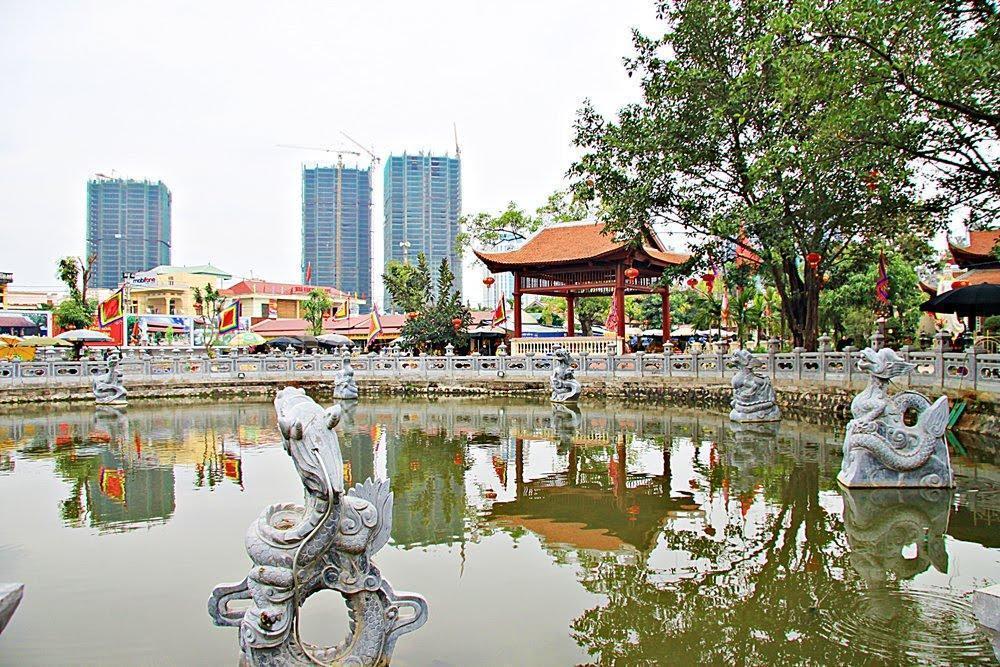
In 1997, the villagers of La Khe started to restore the seven-compartment pavilion, in 2002 they continued to repair the two central palaces and the harem. Dai Bai and Trung Cung are built in the shape of the word “Nu”, the harem is in the shape of the letter “Ding”. All interiors are decorated with fire.
The campus of La Khe communal house today is about 8000m2, the yards are all paved with red bricks. The communal house looks straight across the yard to a moon lake in the south with a row of stone railings around, the statues of animals reflected on the water.
Visitors from the village road enter the ritual gate and then follow this wide lakeside alley through the communal house to a long yard, in front of which is the three mandarins, the great shrine of the communal house, on the right side of the yard is Dien Khanh pagoda. Ba Temple is on the left, the 5-compartment front hall is built in the style of 2 floors and 8 roofs, the front is also very open like the general architecture of many communal houses. The front court, the middle palace and the harem are located in parallel in the shape of the letter “Three”. A yard away on both sides of the temple is a row of houses that deliver visitors & worshipers.
IS THE BA LA KHE BEER STOP REALLY HOLIDAY?
Bia Ba communal house is famous for its sacredness. On the first days of the new year or the first day of every month, the full moon day is always crowded with people going to the ceremony. From the entrance, there are nearly a dozen shacks with the sign “write a letter to rent” and there are old women doing the profession of prayer. In the first days of the new year, many visitors from all over the world come here to worship. The offering tray is prepared according to each person’s preferences, but mainly vegetarian offerings such as incense, fresh flowers, cakes, ripe fruits, betel nut areca and a little change. They pray to the Holy Lady for health, peace, luck, pray for fortune, get promoted, pass the exam, buy a house and then sell it again, win a business contract… and mainly beg in business. business. Anyone who can sow a head-up coin is very excited.
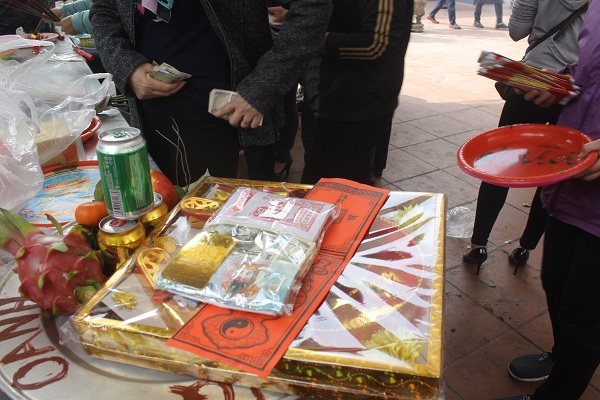
Many people believe that the prayers at Bia Ba Temple are really inspiring. According to the people of La Khe, in the past, Saint Ba was a person who was attentive, worried, and managed everything in the palace so that the King could confidently fight everywhere. From here, folk beliefs arose to pray for the blessings of the Blessed Virgin, hoping to be favorable in doing business. Every year, many successful business owners and shopkeepers return to repay the kindness.
True – false about the inspiration of prayer at Bia Ba communal house, but the rumor persists over time that makes Bia Ba become sacred, more sought after by the business world. Since Bia Ba was brought to the courtyard of La Khe communal house, the number of people coming to the ceremony to pray for good fortune has increased. On the full moon occasions of July, before the Lunar New Year and especially after Tet, people come to worship and worship Bia Ba communal house in large numbers with the desire to have a new year “all things go well”.
Coming to La Khe, visitors can not only admire the historical and cultural relics of the locality but also have interesting experiences in the pilgrimage to the past. The ancient solemnity of Bia Ba communal house and the inspiration of the prayer for prosperity have attracted many people to come here. In 1998, Bia Ba – La Khe communal house was ranked as an architectural and artistic relic by the Ministry of Culture and Information.
HOW TO MOVE TO BA LA KHE BEER CAREER
You can go to Dinh – Chua – Beer Ba La Khe through these bus routes: 105, 27, BRT01.
TICKET PRICE TO VISIT BA LA KHE BEER STORE
When you want to visit Ba La Khe Temple – Temple – Beer Ba La Khe, it is completely free for anyone
OPENING TIME BA LA KHE BEER STORE
Temple – Temple – Beer Ba La Khe is open all day, if you want to come here to visit, you can come at any time.
SUMMARY SOME NOTES WHEN VISITING THE BA LA KHE BEER STORE
- When going to the temple, you must dress modestly and cleanly. Do not wear short skirts, shorts, or open-armored tops so as not to violate the precepts of impurity in the Buddha hall, and to violate the precepts of disrespect.
- Do not let children run around naughty sitting or lying in the Buddha hall.
- Do not arbitrarily spit … around the area of the Buddha hall, the three treasures.
- Do not arbitrarily use or take any of the temple’s furniture as your own.
- In the Buddha hall, the Three Jewels should not wear shoes, chew betel nut, or smoke.
- Should turn off the phone or let it vibrate before entering the temple, especially preparing to burn incense and worship.
- Do not break branches to pick flowers.
- Do not put incense indiscriminately into flower beds and ornamental pots.
Source: Collected internet.
